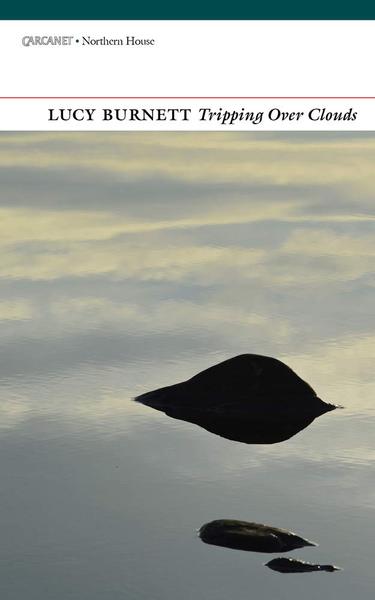Tripping Over Clouds
Lucy Burnett
(Carcanet, 2019); pbk: £9.99
Ezra Pound suggested that poets ‘go in fear of abstractions’, and his advice continues to hold much weight. Like any principle of course, not only will excellent exceptions keep occurring, but it deserves to be held to account. Pound would have expected no less. In her second full collection Tripping Over Clouds, Lucy Burnett does exactly that, and ‘underpinning this is a re-imagining of abstraction as a prior state of possibility and potential from which the world and ourselves are constantly re-emerging – as abstraction to, not from.’
From a visual artist’s perspective, that’s quite a tilt at the generally accepted, but it’s a superbly honed, and, I believe, fulfilled tilt, both in the collection’s concept and execution. However, it is a big ask of one collection, and perhaps in Voltaire’s terms, ‘the sea to drink’. If Tripping Over Clouds is to be approached with some trepidation that is not in itself problematic.
The book is divided into four substantial parts. Opening with the titular poem, the reader will soon become aware not only of Burnett’s fellrunning and hillwalking joys but ‘by the grace of the big sky,/ and the serrated under-silhouette of Skye,’ (‘Big Sands’), and in her subsequent play on ‘fell/falling’, right through to her pairing of ‘thyme’ and ‘time’ that it’s impossible to miss her serious fun in punning and dancing with homonyms. Throughout, she’s a poet who enjoys puzzling, and though ‘Cryptic’ comes near the end of the book, its subtitle ‘v. the act of preferring the questions to the answers‘ makes perfect sense here, and in Burnett’s terms, is fittingly placed. Like other runner and walker poets (Helen Mort, Harriet Tarlo and more), there is considerable impetus and energy in her word footholds, placed in space. Heaney-like too, Burnett is unafraid to be self-reflexive journeying through landscapes… ‘to brag before whose vowels flattening’ and ‘to slipping gutterals’ (‘Brig-hills’). Indeed this is a very physical experience of land, and whilst not anthropomorphic, there’s an element of sensory blending where topography permeates skin.
That last is perhaps particularly true of the first section, but continues into the second, in which the poems move sometimes further afield, but simultaneously invade the more autobiographical. Even so, as visual artists appear increasingly, there is again that patterning of words:
the etymology
of moments from
momentum shifts
(the density of time)a darkness weighing
light textures airto touch become
(‘Gibbous moon’)
The weight of experience is assayed increasingly, as the poet asks questions of opposites, and seeks understanding in geometric terms. Be warned:
Poems don’t contain solutions
any more than cave-paintings
contain non-sequiturs.(‘The Poetess’)
The third section is a 34-part poem exploring 34 major works of art. I found the mapping of these poems interesting as the artworks were named at the end of sequence, which came somewhat unexpectedly, not having been indicated in the contents list. How the reader deals with that may vary considerably. I had the sense that this might work very well as a self-contained pamphlet, where the natural drive would have been to re-read that sequence, re-understanding each poem in conjunction with the visual key. Equally, I enjoyed the progression of Tripping Over Clouds, recognising the poet’s reasons. Nonetheless, the sequencing directs the reader onwards, despite a certain inherent self-containment.
The fourth and final grouping take us through Trump’s Twitterings, and the ongoing catastrophe of Brexit, in a time where
history is marching slowly
to the graveyard.
(‘Big Friday’)
This is a dense and complex collection to convey here, dealing as it does with
Any weakness, any geometry, and all architectures.
Abstraction makes speed!
(‘Mouvements’)
when
I come from the active passage of pure abstraction.
(‘Lavender Mist’)
This is extraordinary, beautiful work, by a Scots environmental activist poet. I would simply question if it either needs compartmentalised rather more, or if a more spacious setting might give the entirety the air I would appreciate.
Beth McDonough


Leave a Reply